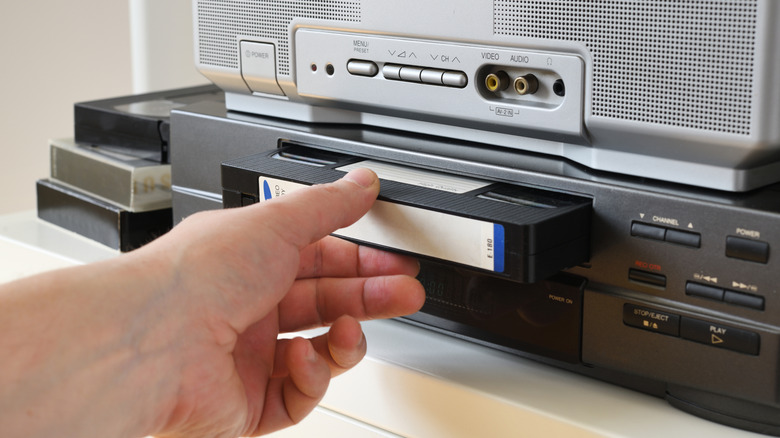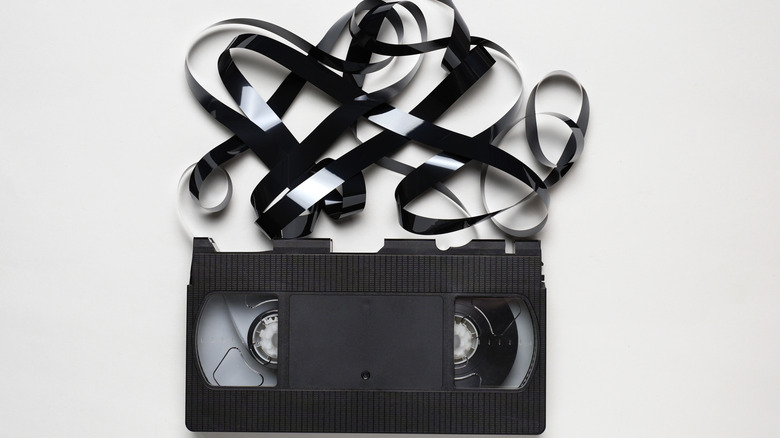What VHS Stands For (And How The Retro Video Tech Works)
Videotapes and the VCRs they're played on first appeared in the United States in 1977, the same year "Star Wars" was released. However, the technology had been available in Japan since 1971 when the Victory Company of Japan (or JVC) released what they called a U-matic. This technical marvel allowed people to record whatever they wanted, whenever they wanted. Gone were the days when you had to hope and pray for reruns that were unpredictable and often few and far between.
It might be hard for those born into a world where streaming a movie is a literal on-demand convenience to understand just how much of a paradigmatic shift in entertainment the new technology was at the time. Renting a movie you longed to watch from a video store like Blockbuster or Hollywood Video became a much-anticipated weekly ritual in most households during their heyday.
By 1998, 89% of households in the U.S. had at least one VHS player. The VHS — or Video Home System — was a bona fide global phenomenon that brought about a scuffle known as the Format Wars — which Betamax lost. On one side was JVC backing its version of the magnetic tape system, on the other was Sony with its Betamax machines — just another discontinued Sony format. In all reality Betamax was superior in almost every way but also cost a lot more. The price tag was something Hollywood knew all too well because studios had been using it since the 1950s.
VHS and VCRs were a global paradigm shift
A standard VHS was about 7 inches wide, 4 inches deep, and 1 inch thick. Two small spools — a supply reel and a take-up reel– rested inside the plastic outer shell. The 1/2-inch strip of oxide-coated magnetic Mylar tape would play, unwinding itself from one and winding around the other. This facilitated the need to rewind the tape once it had been played, and birthed the "Be kind. Please rewind," slogan. As the cassette loaded into the VCR, a lever opened a spring-loaded protective door along the edge where the tape was exposed , simultaneously inserting a pin into a hole that unlocked each spool.
The VCR extracted the tape and threaded it around a spinning drum with multiple heads. It could either record data onto the tape by magnetizing it or read the changes in the magnetic particles using a helical scan method, turning them into audio and video signals readable by the television. Most tape was manufactured thicker than required so as not to break or tear easily, and sensors at the beginning and end of each run — typically between 800 and 1,140 feet long — prevented it from unwinding inside the VCR.
The first film released on VHS was a relatively benign South Korean movie called "The Young Teacher." The last to get ported over was the 2005 film, "A History of Violence," nominated for two Academy Awards. Today, some of those old VHS tapes are worth more than you'd think.

